Interview: Better Letters’ Sam Roberts
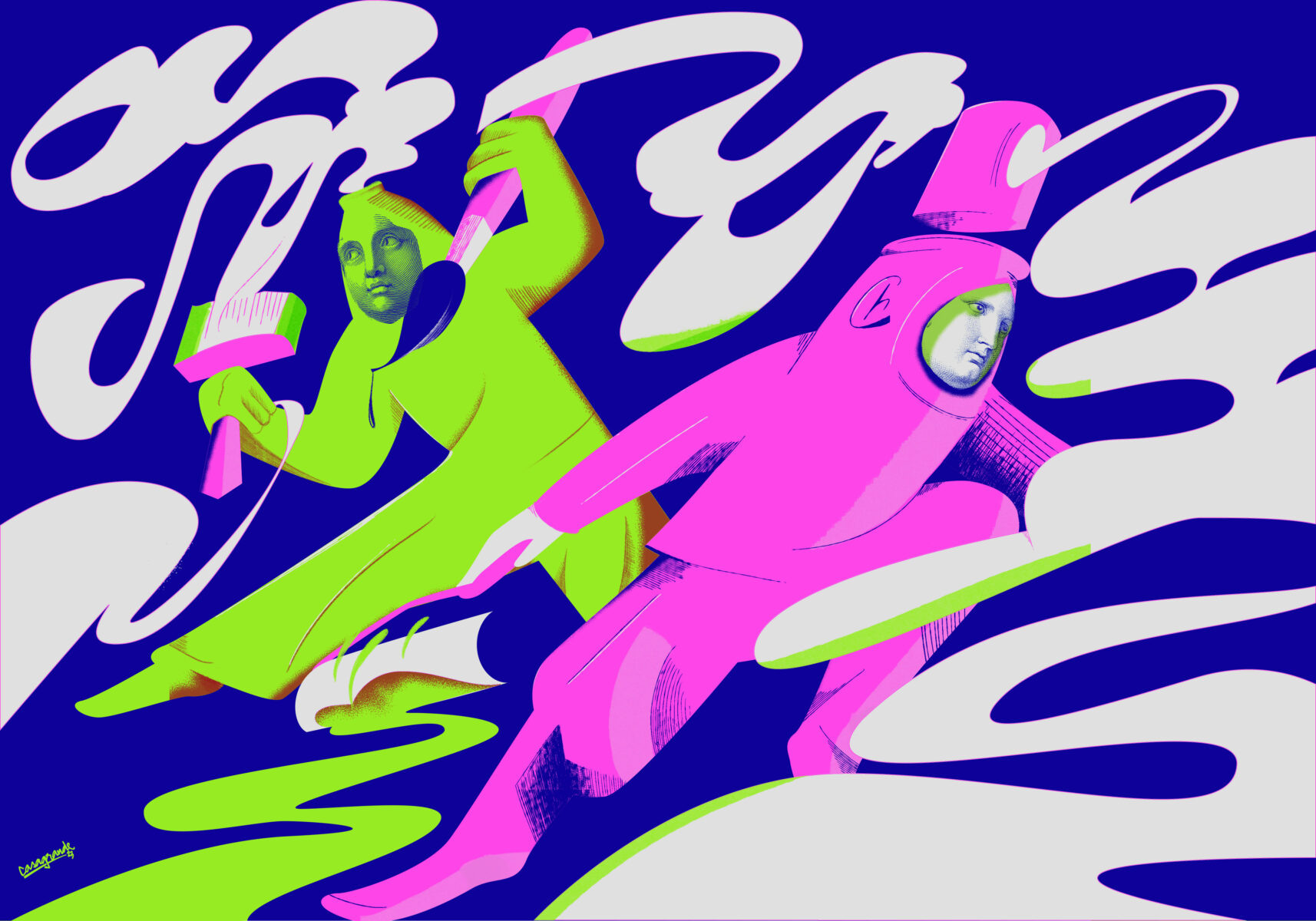
Having desire and discipline
Sign painting for site specific locations is an art form with a long history, and recent years have seen a growing global community of painters.
Many will be familiar with lettering for pubs, for example, but often illustration is included alongside lettering, from small elements to stand alone images.
Although not a practioner himself, Sam Roberts of Better Letters has been long immersed in the sign painting world, and he spoke to Frances Moffatt about his involvement in sign painting, what makes a good sign painter and advice on what to do if you’re interested in exploring this area.
You’ve got to be extremely motivated and willing to very much magpie your way to success
Sam Roberts
Where did your passion for sign painting begin, Sam?
After graduating I worked in and around the advertising industry for five years, and my interest in sign painting began as a bit of a hobby really. It started in 2006 when I became aware of these things called ghost signs. Ghost signs are fading remains of hand painted signs that have lasted longer than they were supposed to. They’re normally on brick walls and anything from between 50 and 150 years old, and they’re kind of there but not there.
I began researching the subject, writing a blog, and running some voluntary projects in that realm. In the course of all these activities I found that I got a lot of comments about it being a shame that we’ve lost the craft of sign painting and that it’s a dying art, but I quickly discovered that was not the case. I realised that though the sign painting industry was considerably smaller than when these ghost signs were painted, there was still a small and vibrant sign painting community and with digital and social media this community was increasingly global and increasingly connected.
This led to me founding Better Letters, initially as an online listing platform to showcase typographic artists from around the world, and then expanding into a global events and workshop programme and a magazine.
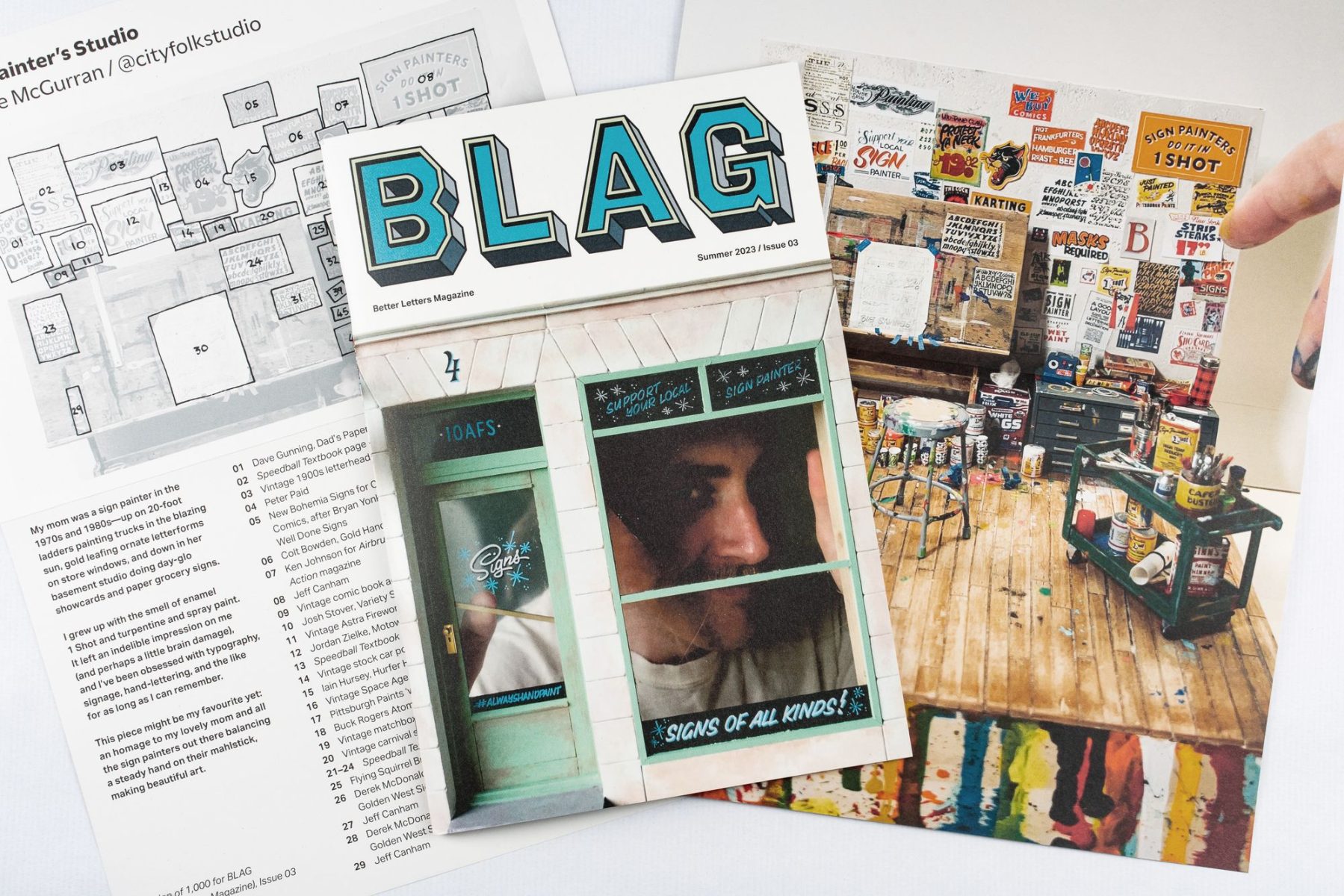
Do you feel the commercial use of sign painting seen a resurgence within recent years?
In the last 10-15 years there has definitely been an increase in the prevalence of sign painting and people practising sign painting. I think this has been partly a reaction to the ubiquity of vinyl and digital signs, and partly a craving for the handmade and a more wholesome form of production and consumption, like craft beer or artisan bakeries.
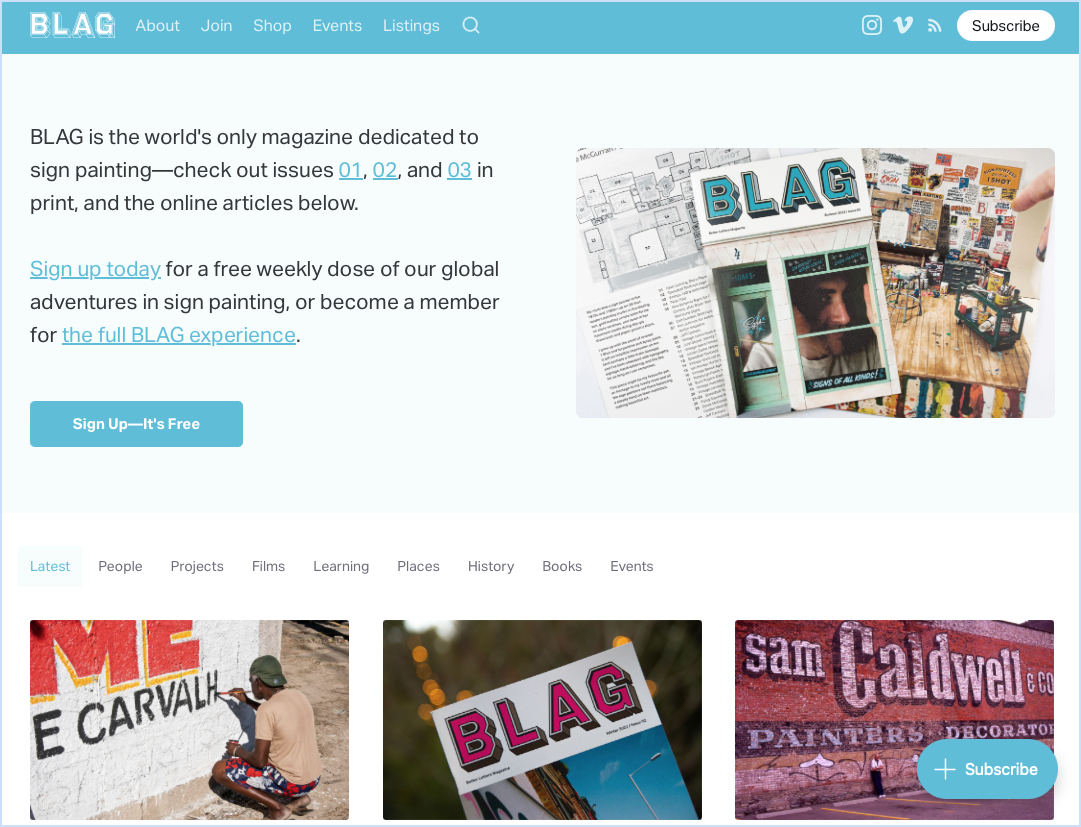
What do you consider to be the top qualities that make for a good sign painter?
I think number one would be layout and lettering skills. The majority of sign painting is lettering, and it’s important to understand the fundamentals of lettering and how to prioritise different elements within a composition.
After that, I think it comes down to personal qualities. It’s important to have desire and discipline, which will help you to push through the difficult times of learning your craft when your work might look a bit rubbish, and continue to just practice and practice until you develop that skill and mastery. Humility is another good quality. There’s an organisation for sign painters called the Letterheads, which has been running since 1975, and the catchphrase for their gatherings is ‘Leave your ego at the door.’ All the best sign painters are humble. They’re accepting of the fact that they will always have more to learn, and it’s only by being in that mindset that you will be able to continue to improve.
What advice would you give to illustrators who want to explore sign painting as part of their creative practice?
A good starting point would be a big article we have on the Better Letters site called ‘Where can I learn the craft of sign painting?’ That’s worth having a look through as it will give you an in depth and extensive overview of how you can learn.
The challenge of entering the trade now is that in the UK there aren’t any long-term study programmes, so you can’t go to a college or university and learn about sign painting in a structured, modular way. There’s a college in Ireland that does a 6 month course and one in Los Angeles that does a 2 year course, but that’s it worldwide for formal sign painting education.
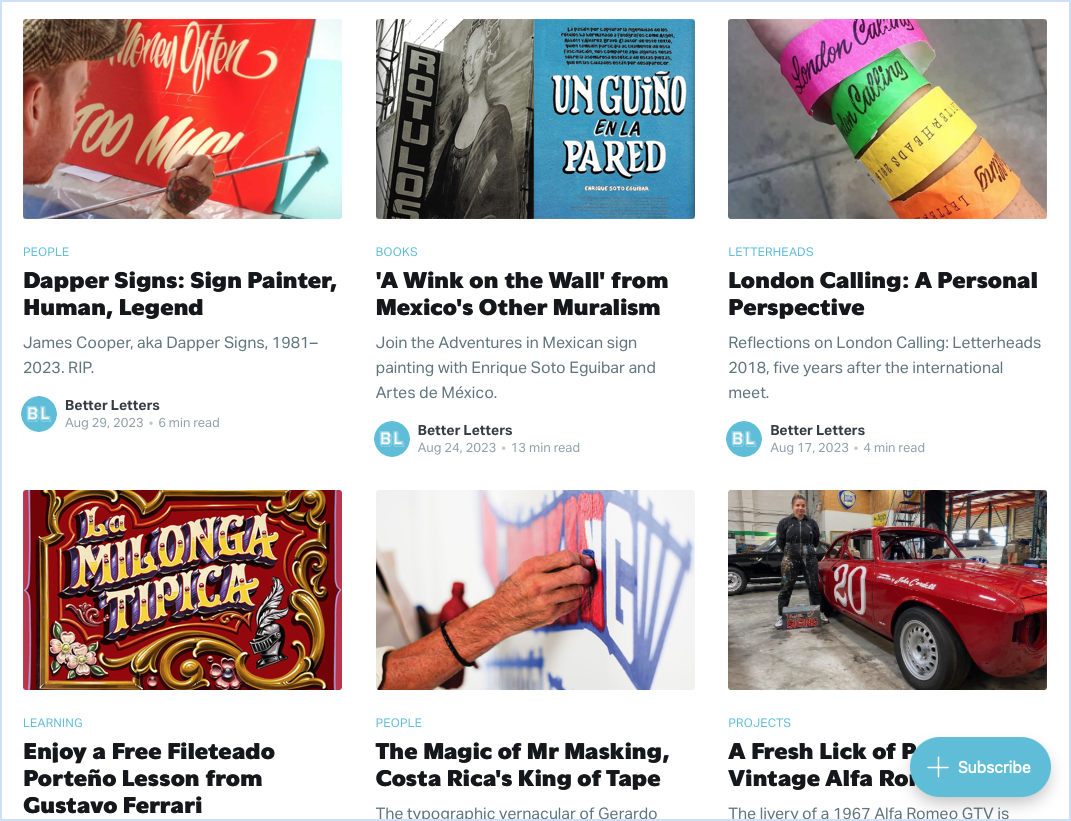
Therefore, if you want to learn you’ve got to be extremely motivated and willing to very much magpie your way to success. What I mean by that is that everything is out there if you can go out there and collect it all, for example going to workshops and buying books, which will allow you to get to know basic techniques and what paints and brushes to use.
You could also do some networking, whether that’s in person or on social media, and see if you can shadow a sign painter for a day and watch them in action. When we used to run sign painting workshops, the main backgrounds we saw people coming from were graphic design, illustration and grafitti.
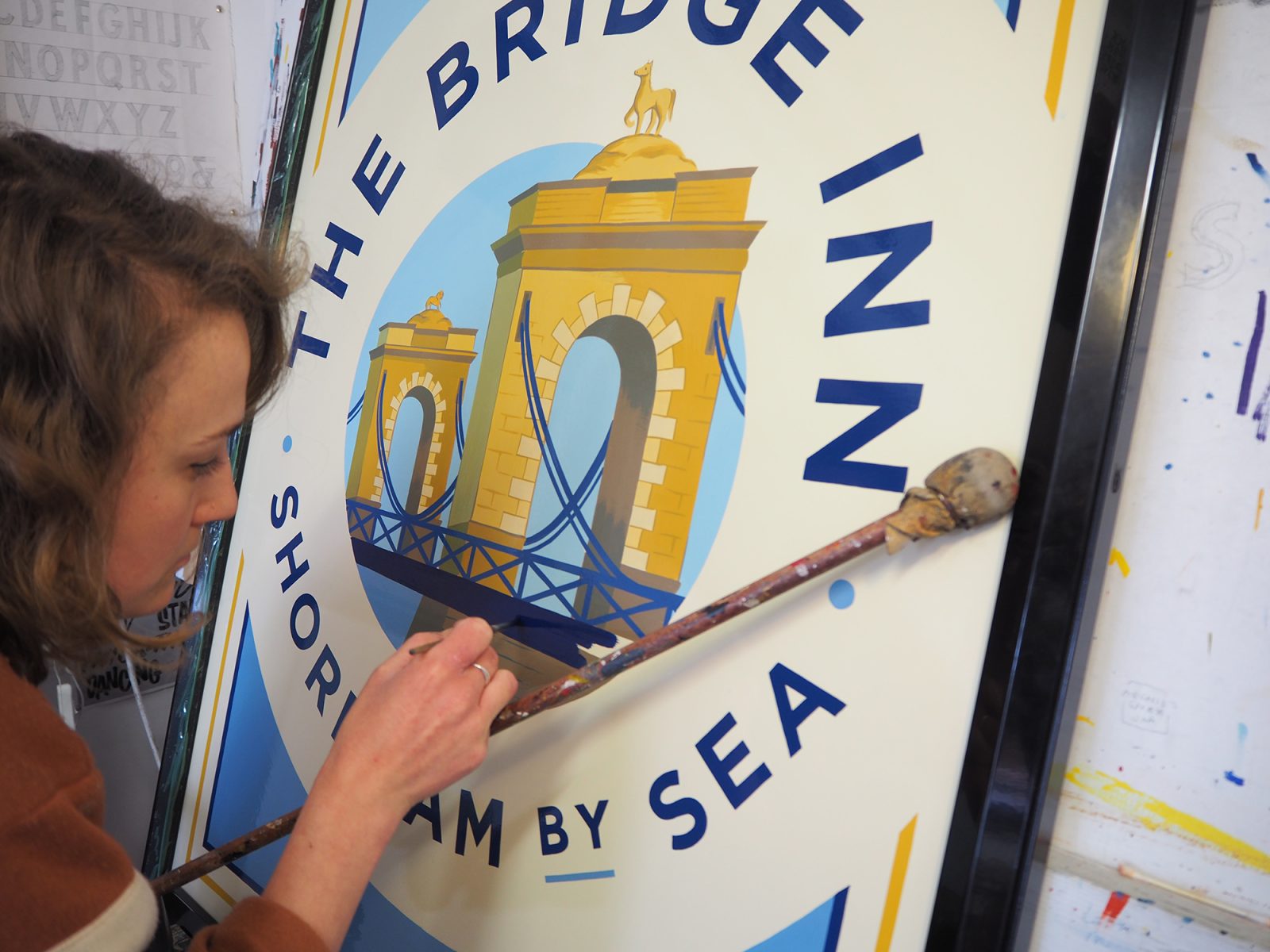
I would definitely say that sign painting is a viable string to add to your bow as an illustrator, but you can’t enter into it flippantly as it takes years of practice and dedication to learn the craft. Ultimately though, if you are interested in sign painting, I would just encourage you to give it a go and see where it takes you.
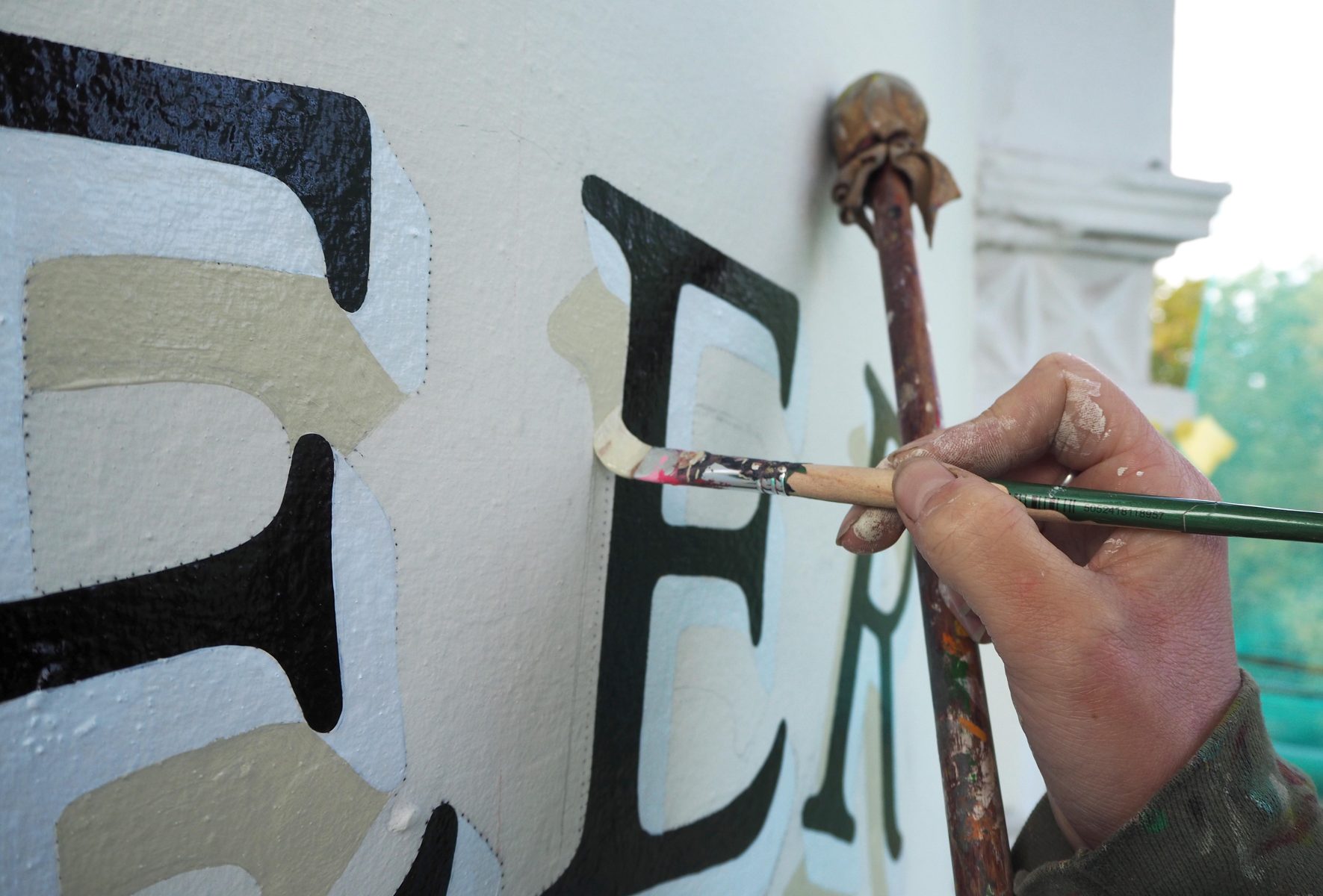
Check out some of the artists working in the sign painting area:
Ged Palmer at Luminor Sign Co.
Kelsey Dalton McClennan and Andrew McLennan
Read the Illustration for Children Season interview with illustrator Alex T Smith here, the Editorial Season interview with Sarah Habershon of The Guardian here and the Branding Season interview with Uncommon Studio’s Jhy Turley here
